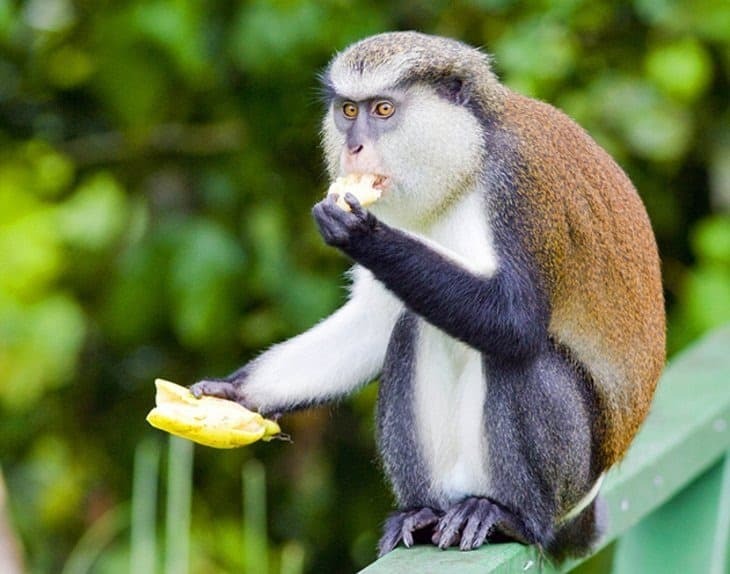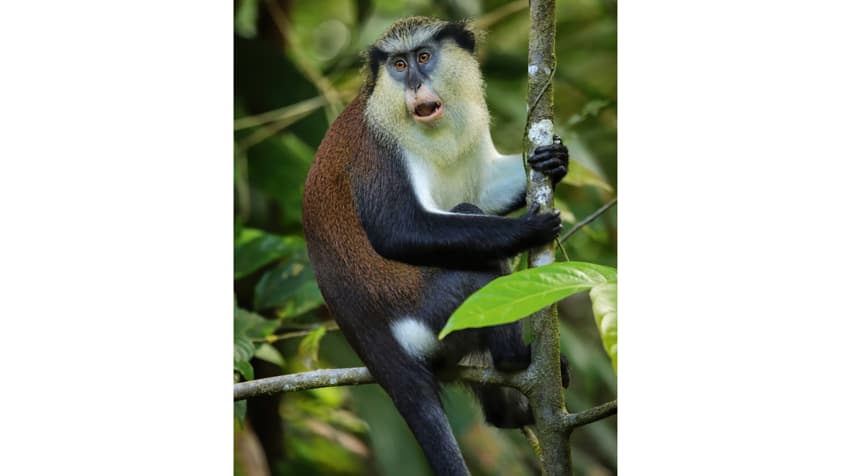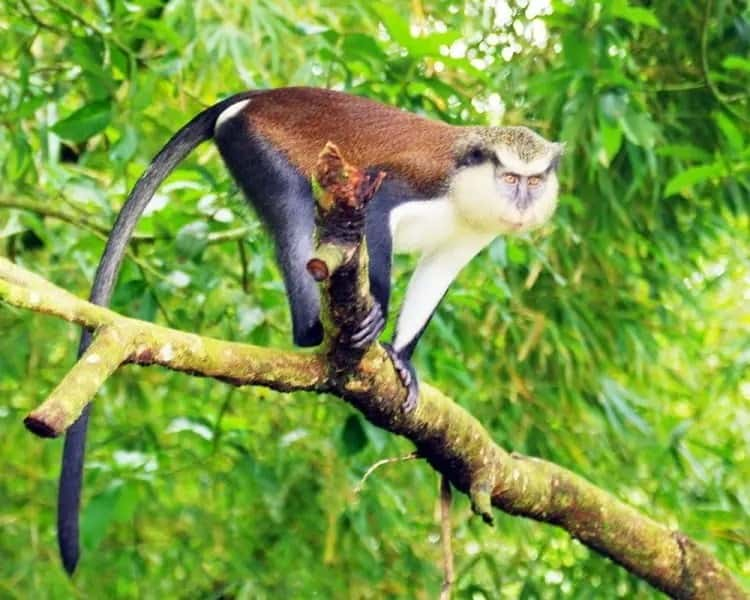
PM Roosevelt Skerrit congratulates Keir Starmer on resounding victory in UK elections
2024-07-06 05:22:05
The Mona Monkeys, known for their expressive nature, inhabit the lush canopy of Grand Etang National Park in Grenada, according to the article.

National Geographic Traveller Features Grenada’s Mona Monkey
Grenada: “Mona Monkeys”, a special species of Grenada has been ranked in the list of the National Geographic Traveller (UK). In the article titled “Meet the Caribbean’s rarest animal residents,” Mona Monkey is featured on the top of the list, highlighting its presence in the island’s verdant heartlands.
Mona Monkeys are described as the expressive primates in the article who live at the lush canopy of Grand Etang National Park in Grenada. It is known as a paradise of crater lakes, waterfalls and rainforest as the island nation boasts the creature as their national treasure.
Mona Monkeys are the only species of monkey that are found in Grenada and the National Geographic Traveller added that these are known for their sociable personalities among the locals. Their booming voices and lithe, plasticine-like limbs attract the attention of the people and the tourists from across the globe.
 Grenada's Mona MonkeysThe monkeys have blue-grey faces that are surrounded by fluffy white beards that offer great experience to the people who are fond of the creatures. Their voices bring the rainforest in Grenada to life and the locals noted that they are charming creatures in the country.
Grenada's Mona MonkeysThe monkeys have blue-grey faces that are surrounded by fluffy white beards that offer great experience to the people who are fond of the creatures. Their voices bring the rainforest in Grenada to life and the locals noted that they are charming creatures in the country.
The mammal’s main home is the Gand Etang where they just clamber down from the canopy and interact with the citizens and the visitors alike.
Originally from West Africa, the creature moved to Grenada in the 18th century on colonial ships. It was considered an accident by geographic experts. Since then, they have established a thriving population within the forested interiors of Grenada, especially in the national park.
The mammal is one of the most widely exhibited members of the guenon group of African monkeys. Several evidence traced back from the 18th century outlined that these monkeys are descended from a single pregnant female Mona monkey that was brought from West Africa through a slave trade route.
The guenon group is likely to live in grounds of up to thirty-five in forests and their main feed came from fruit, and during some occasion, they also eat insects and leaves. These species consist of brown agouti fur which also has a white rump and their tails and legs are also in black colour. Mona MonkeyTheir faces are blue-grey with a dark stripe across the face and they carry their food in cheek pouches. The Mona Monkeys are also considered a symbol of Grenada and they communicate through a variety of vocalizations and body language.
Mona MonkeyTheir faces are blue-grey with a dark stripe across the face and they carry their food in cheek pouches. The Mona Monkeys are also considered a symbol of Grenada and they communicate through a variety of vocalizations and body language.
In addition to that, there is also a looming threat to the existence of the monkeys in their native West Africa due to habitat loss and increased hunting. Hence, their population is considered significant for securing them from extinction.
National Geographic has named other species that are found in the countries of the Caribbean region. It has included the Flamingo from Bonaire on the second position, Giant Swallowtail butterfly from Jamaica on the third position, Iguana from the Bahamas, and Scarlet Ibis from Trinidad and Tobago.